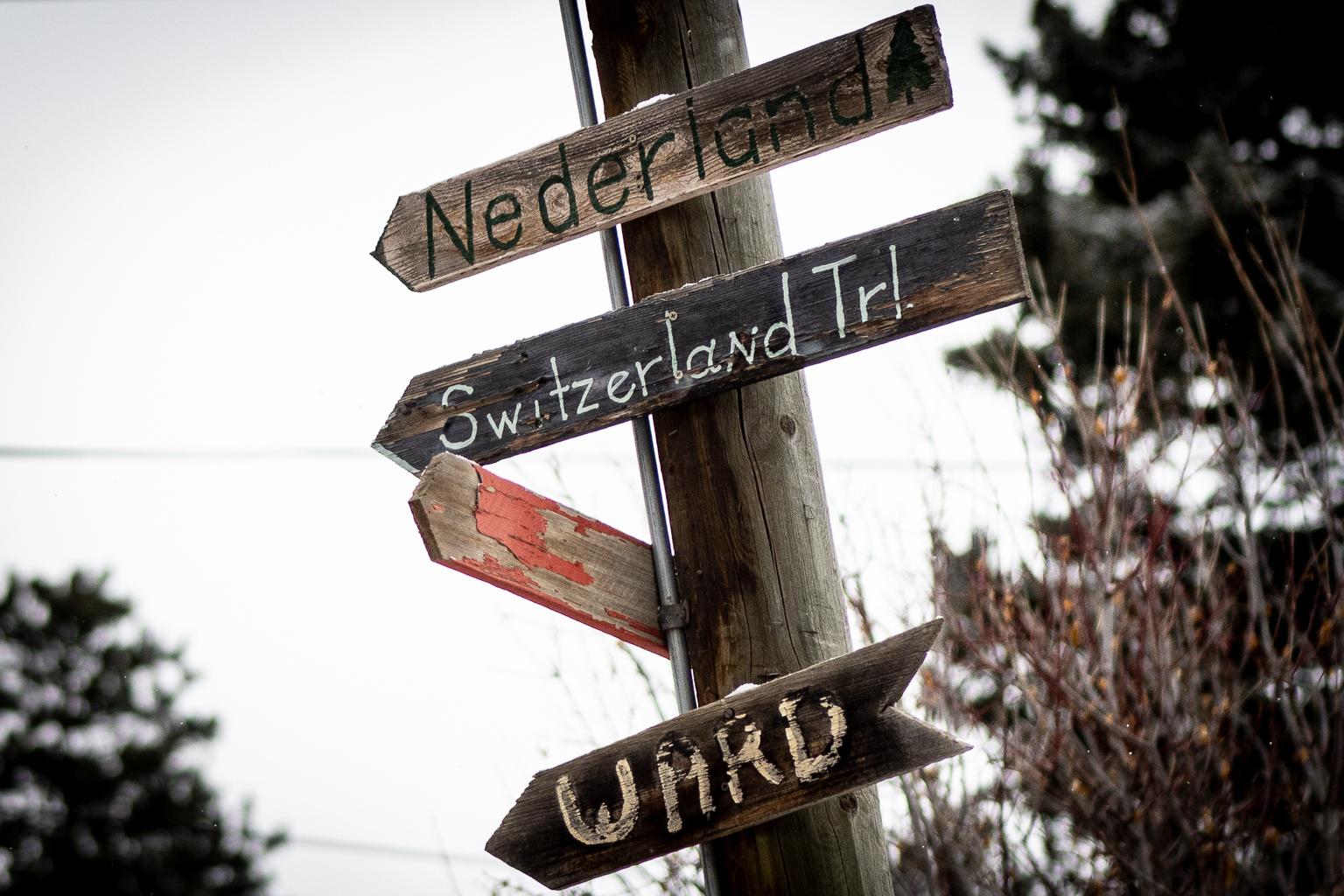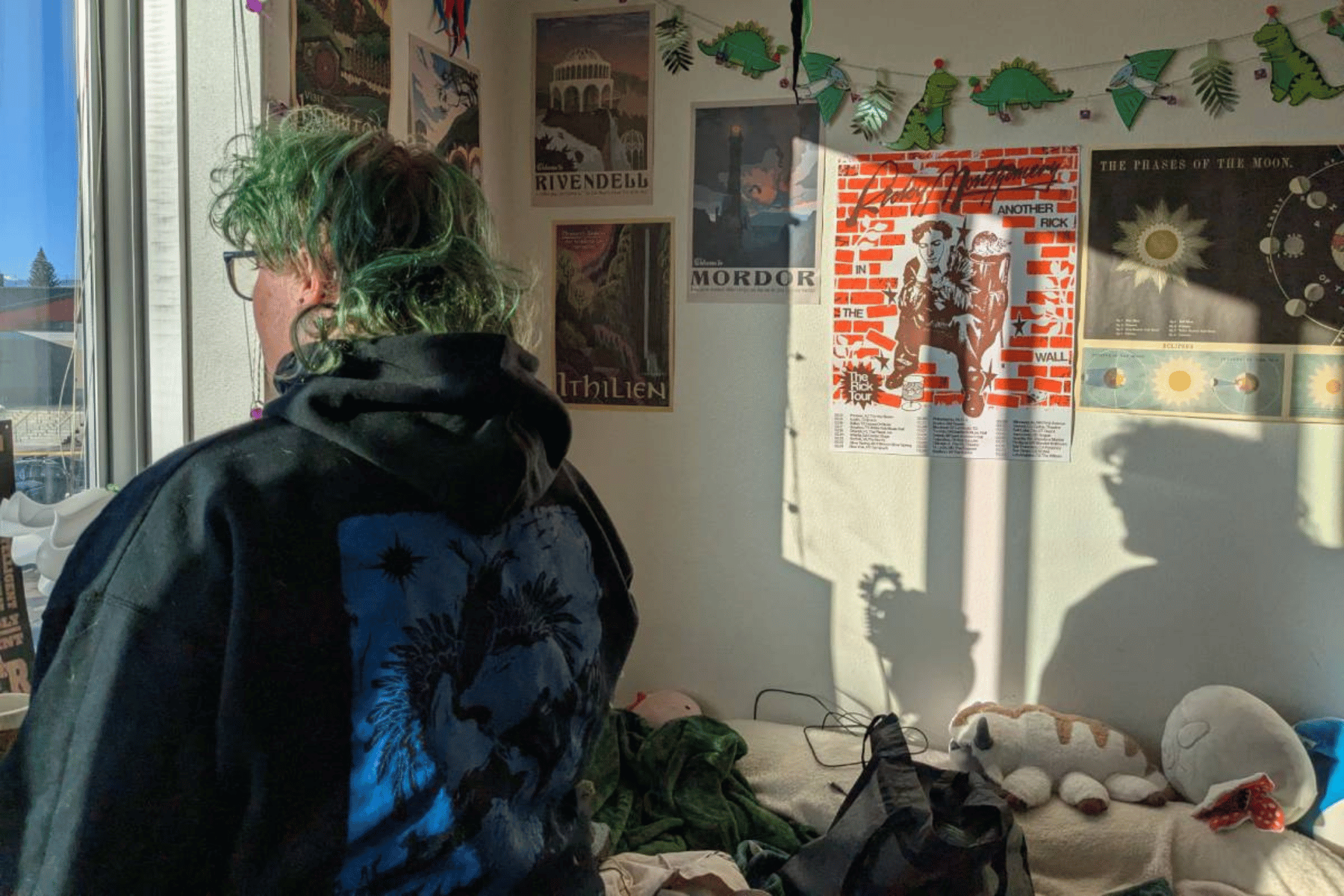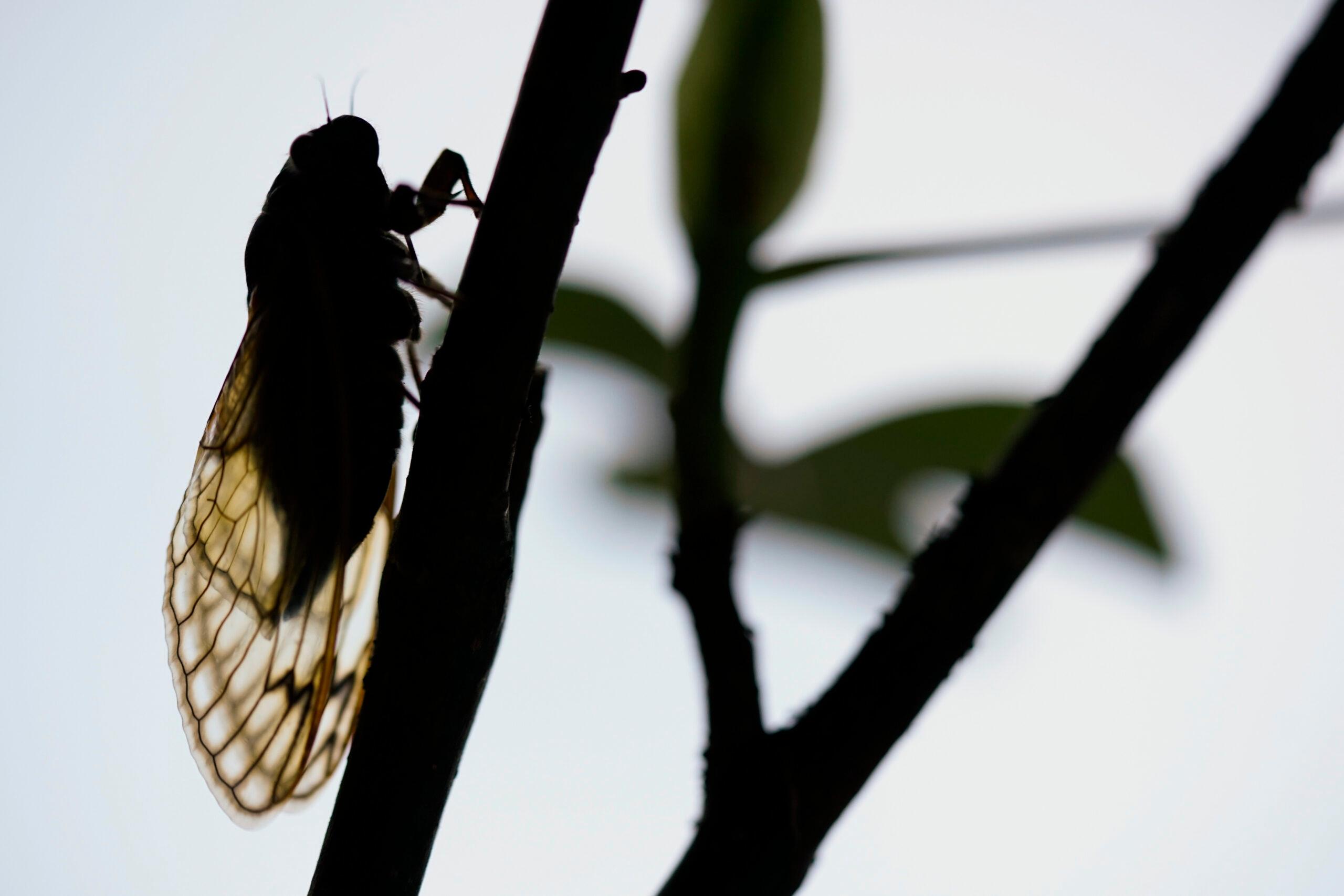
When you stop and listen, Colorado is the stage for an insect cacophony this time of year.
Crickets sing in the grasses, and the trees are full of shrilling cicadas and the scree-scree-scree calls of katydids.
Those are sounds most people can identify. But what about the less obvious chirps and clicks?
That question has been on Ann Garfinkel’s mind this summer as she’s taken her daily walks through an open space near the Highline Canal south of Denver. This spring, as the epic mud finally began to dry, she heard something new in the trees — at least, new to her.
“We could hear a little ‘click’ in the trees. And at first I thought it was a bird, and eventually realized it was some kind of bug,” said Garfinkel. (“We” in this case includes Garfinkel’s Irish Doodle, Reilly, who was more interested in pogo-ing after rabbits than investigating clicking insects.)
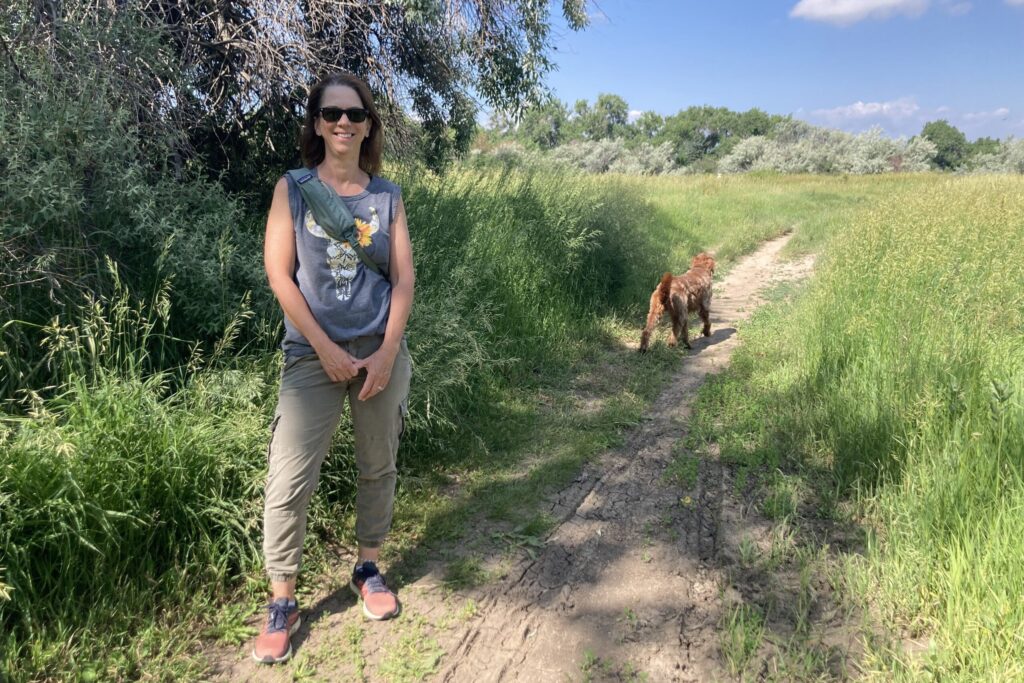
Garfinkel wanted to know what she was hearing: Was it a native insect she had never noticed before, or some invasive interloper she should worry about? She wrote to CPR’s Colorado Wonders to see if we could help her learn more.
But it quickly became clear that like any good whodunnit, there are plenty of suspects for that mysterious click in the woods.
Suspect number one: The click beetle
Garfinkel’s first attempt at identification was a simple Google search. “A clicking bug, in Denver, in June” turned up a swift and rather literal answer: the click beetle, also known in some parts as a “snap jack.”
Click beetles are one of the most diverse of the beetle families, and they can be found all around the globe. What they share is the ‘click’ — a distinctive little finger-snap sound they make while jackknifing their bodies into the air.
“They can have this very big movement where they can go and put themselves into the air and make this very hard noise,” according to Francisco Garcia, entomology manager at the Butterfly Pavilion in Westminster.
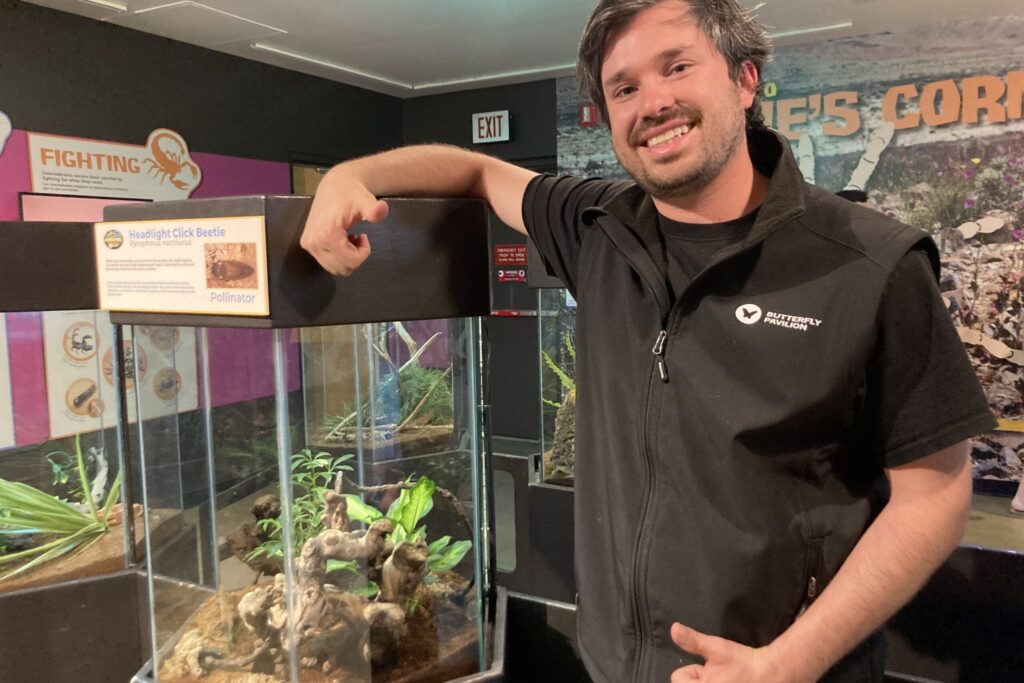
It’s a dramatic move with a relatively simple goal: to flip themselves back over when they fall on their backs. It can also be a defensive action, as their awkward, tumbling leaps can help get them out of harm’s way.
“If a bird is trying to eat them, they will click and then the bird is going to be like, ‘oh, what's this? It's flying around. Maybe I'm not going to eat this animal,’” Garcia said.
Click beetles can vary a lot in size and color. Some boast large, pale eye spots on their backs that scare away predators. The Butterfly Pavilion has a tropical species in its collection with phosphorescent eye spots — a glow-in-the-dark ‘back off’ sign that bursts to life when the beetle feels threatened.
Farmers might not feel very warmly toward click beetles though, given that in their larval stage they’re known as wireworms, a common pest that can damage corn, potatoes and other crops.
Still, away from fields and gardens, click beetles can play a variety of important roles in the ecosystem, including being food for other animals and pollinating plants.
“Some other ones will be sitting on the forest floor so they're going to recycle the soil and make it nutritious and nice for other plants,” said Garcia. “Some others will be eating… rotten wood. So there are these little janitors out there just helping us have a healthy ecosystem.”
Suspect number two: Putnam’s cicada
Because Garfinkel has heard this clicking repeatedly, and from a distance, CSU Extension agent Karim Gharbi doubts a click beetle could be the culprit. After all, once one has clicked itself upright, it has no more need for noise. And, Gharbi continued, click beetles aren’t that loud.
“You can't hear it from a distance,” said Gharbi, who works out of the Extention’s Denver office. “Whenever I grab one… I have to hold 'em to my ear to hear the noise.”
So he took a recording of Garfinkel’s clicker to iNaturalist, an app that allows users to share nature sounds and photos and discuss them with other people, to see if he could spot a match. Gharbi, who played Pokemon as a kid, likens the app to a Pokedex: “it’s an online catalog of all these different organisms that you can see throughout the world.”
He thinks he identified the sound Garfinkel has heard.
“I really think that it was Putnam’s cicada,” said Gharbi. “I've heard them myself before. It's a very distinctive sound.”
Most cicadas have a special organ called a tymbal they use to make the incredibly loud calls that pulse through summer afternoons. But Putnam’s cicada is different; it belongs to a genus known as wing-tapping cicadas, and its sounds are just that.
Having an unusual sound gives wing-tappers their own audio niche as they try to stand out in their search for a mate.
“There's all of this sound specialization,” Gharbi said of insects in general, “where they're all competing with each other for the same sound space. And so to minimize competition, they each take on their own specific frequency, sound [and] rhythm. They're all basically … making sure that they can still be heard in this cacophony of insect noise.”
Suspect number three: None of the above
At the end of the day, without an actual specimen, it’s impossible to say for sure what Garfinkel has heard, or whether the sound has come from just one type of insect.
“A lot of animals can click,” Garcia said. “So if you don't see the actual beetle then, I don't know, maybe it's not necessarily that kind of beetle.”
But the internet does have lots of places that will try to help you Shazam any insect sounds you’re hearing, if you’re willing to work at it.
Songs of Insects provides little audio clips of crickets, katydids, grasshoppers and cicadas, with delightful descriptions such as “A plaintive, dissonant trill from trees at night.”
iNaturalist, Gharbi’s Pokedex of living things, allows users to upload, ID and discuss all sorts of creatures they run into out in the world.
And for Colorado-specific insect curiosities, Colorado State University’s Extension has information on all sorts of invertebrates: pests, pollinators and much more.
But with fall fast approaching, there isn’t all that much time left in the year to wonder over those clicks and calls from the underbrush; the first Colorado cold snap will silence much of that chorus until their offspring emerge next spring.



